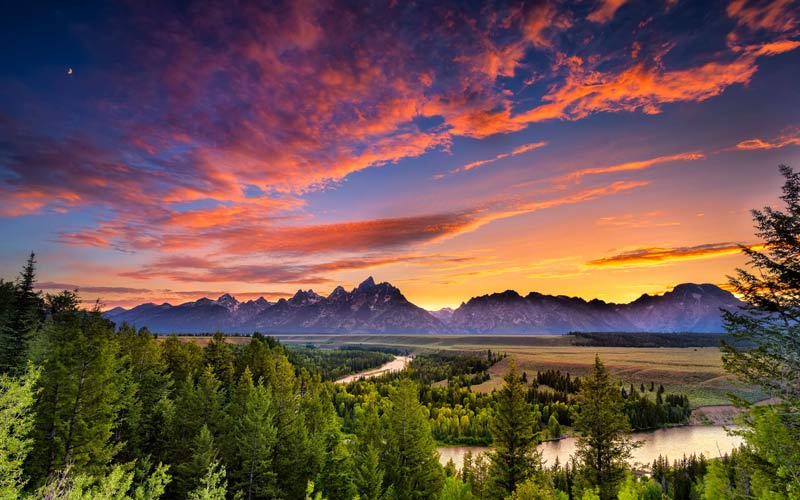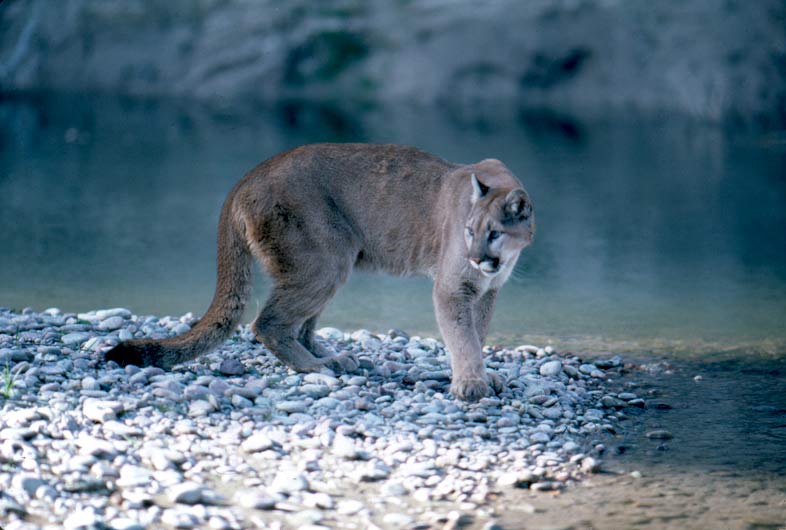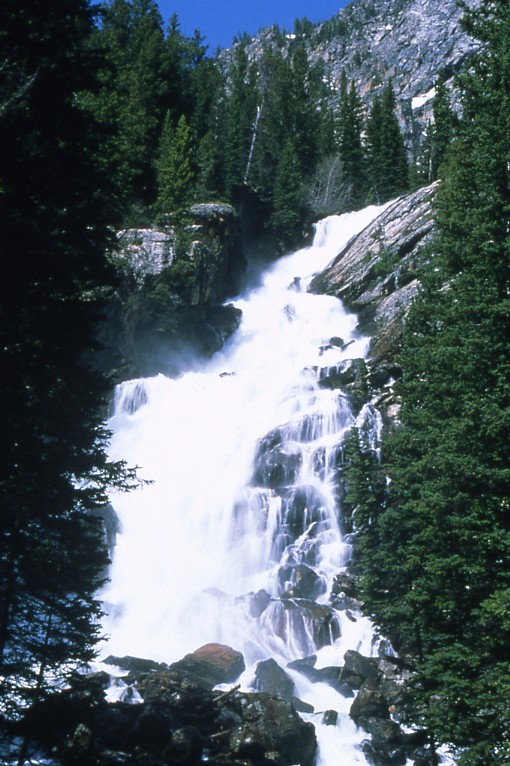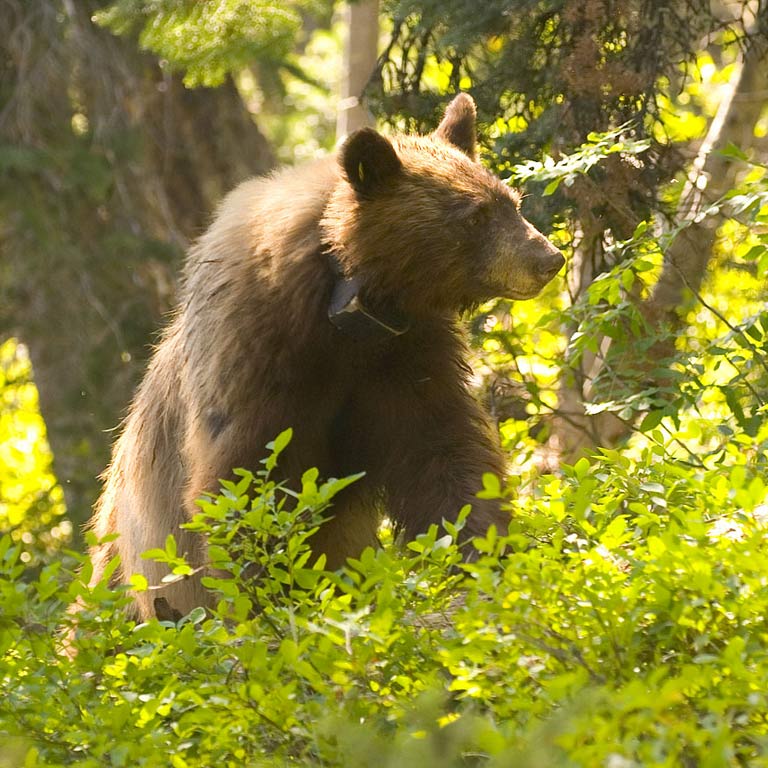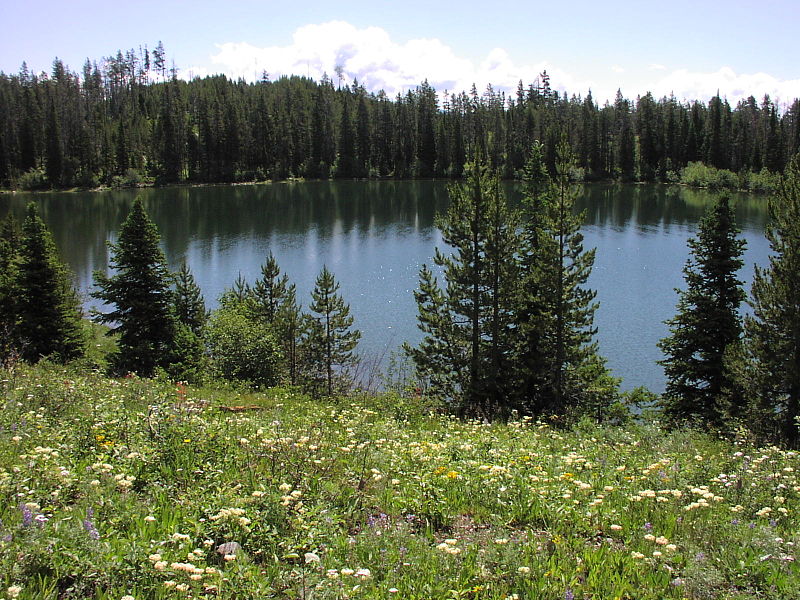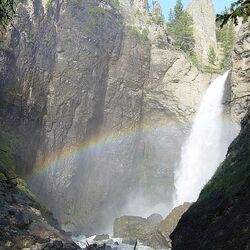Grand Teton National Park
Grand Teton is a national park in the United States, in the state of Wyoming, not far from the world famous park of America - Yellowstone. The two of them and the forest area adjacent to them are organizing the Greater Yellowstone Ecological Zone, with a total area of 73,000 km2. Grand Teton itself is located on a territory with a total area of 1,254 km2, which includes the Teton mountain range and captures the edge of the Jackson Hole lowland. The reserve was founded in 1929.
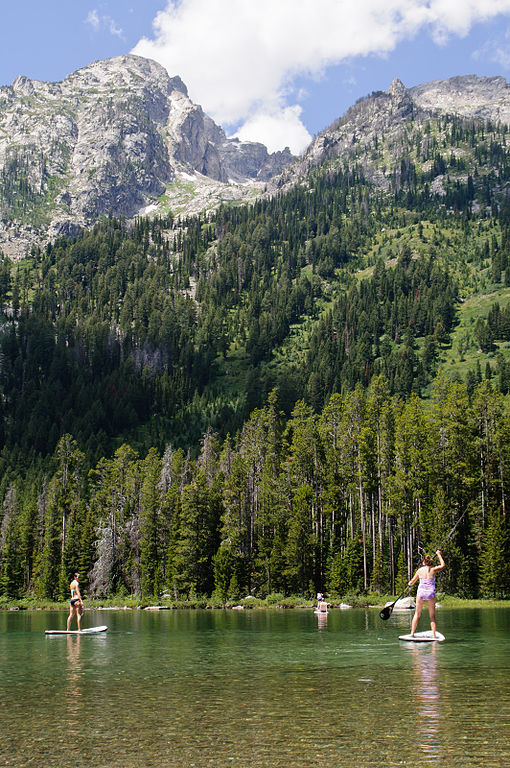
There are lakes in the park area, which are mostly glacial in origin. Jackson is the largest lake in the park, located in the north of the reserve. The Snake River originates from it, which, as it flows, forms numerous tributaries and channels. A dam was built here, which resulted in raising the lake level by 12 m. The most famous glacial lakes of the reserve are Phelps, Lee, Jenny, Bradley, Jackson, Verenitsa, etc. There are also numerous Alpine lakes here.
The main attraction of the park is its highest rock in the Teton range, after which it was named. The height of the peak reaches 4199 m. The flora of this region is almost in its original form. The very first people settled these places 11,000 years ago. Their representatives were mainly nomads who settled in the warmer months to find and stock up on food, as well as tools. Some of the first European residents entered the park area in the early 19th century. The U.S. government began organizing expeditions to these places only at the end of the 19th century. The first indigenous people in the Jackson Hole Valley began in 1880.
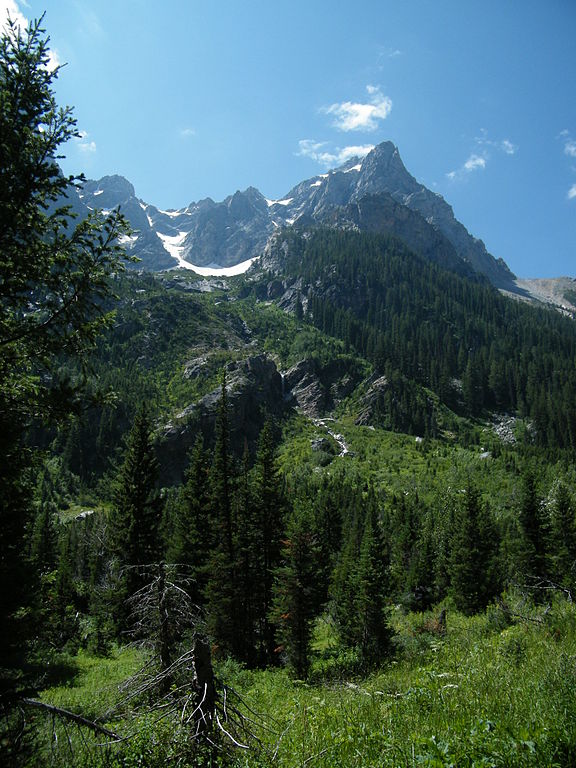
The flora of the Grand Teton Nature Reserve is quite diverse, as it is located simultaneously in several natural areas. But the main factor that affects the local flora is the height difference. The mountainous area is covered with dense forests, representatives of which are spruce and fir. The valley floor is covered with mixed and deciduous trees. The coastal area of lakes and rivers is overgrown with marsh plants.
At an altitude of 3000 m. there are alpine meadows, which are covered with a variety of herbaceous plants, as well as moss and lichens.
As already mentioned, the plants in the reserve are almost in their original form, but there are such varieties of trees that are on the verge of extinction: white pine, soft pine. The reason for this is their diseases that exist in nature.
Grand Teton National Park is also famous outside the United States for its variety of animals. A lot of birds feel good here and breed, among which there is the lightest bird in the world - hummingbirds, as well as golden eagles, peregrine falcons, swans, eagles and many others. Red deer, swift squirrels, yellow-bellied ground squirrels, as well as bison and moose roam the huge area of the park. Gnawing bears roam the territory of the reserve, wolves gather in herds, and there is also a fast cougar. Local reservoirs are filled with beavers, otters, and muskrats.
Grand Teton National Park is visited by many travelers from all over the world. Up to 2.5 million people visit here every year, which puts the Grand Teton on a par with the Grand Canyon and Zion National Parks in terms of attendance. There are very well-developed tourist routes, 320 km long. There are plenty of camping spots. Mountaineering enthusiasts come here. The guests of the park are presented with hotel complexes, as well as information centers.
